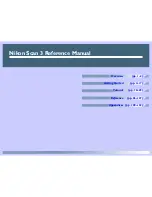
Windows Installer Editor Reference
549
Windows Installer and .NET Technologies
Windows Installer Editor simplifies the process of creating installations for .NET
applications, automating the process by extracting most of the installation details from
your assemblies.
Windows Installer 2.0 or later only
The ability to create .NET installations is supported only by Windows Installer 2.0 or
later.
See also:
Frequently Asked Questions About Microsoft .NET
on page 549
Requirements for Creating a .NET Installation
on page 552
Creating a .NET Installation When You Have the .NET Framework
on page 264
Creating a .NET Installation Without the .NET Framework
on page 265
Importing .NET Framework Security Settings
on page 283
For information on setting the required .NET Framework version, see
Setting a
Requirement on the System Requirements Page
on page 187
Frequently Asked Questions About Microsoft .NET
This section covers important concepts you should understand before you use Windows
Installer Editor to build .NET installations.
What does the common language runtime do?
The common language runtime manages the execution of code and provides services
such as cross-language integration, code access security, object lifetime management,
and debugging and profiling support. Search for “Common Language Runtime” in the
MSDN Library (
msdn.microsoft.com/library/
).
What’s the difference between managed and unmanaged code?
Code developed with a language compiler that targets the common language runtime is
called managed code. All code based on Microsoft intermediate language (MSIL)
executes as managed code. Managed code is self-describing; it contains metadata that
describes every element managed by the common language runtime. The runtime uses
the metadata to provide services.
Code that runs outside the runtime and does not contain metadata is called unmanaged
code. Examples of unmanaged code are COM components, ActiveX interfaces, and
Win32 API functions. Unmanaged code executes in the common language runtime
environment with minimal services.
Can I add managed code to an existing application?
Few developers are able to rewrite existing applications completely as managed (.NET)
code. Instead, you can combine managed and unmanaged components in one
installation. Code that contains a mix of managed and unmanaged elements is called
interoperable code.
The common language runtime supports COM interoperability (interop). For backward
compatibility, COM interop provides access to existing COM components without
requiring you to modify the original components. COM interop also enables your COM
clients to access managed code as easily as they access other COM objects. This is
accomplished by adding information to the system registry so .NET components are
















































